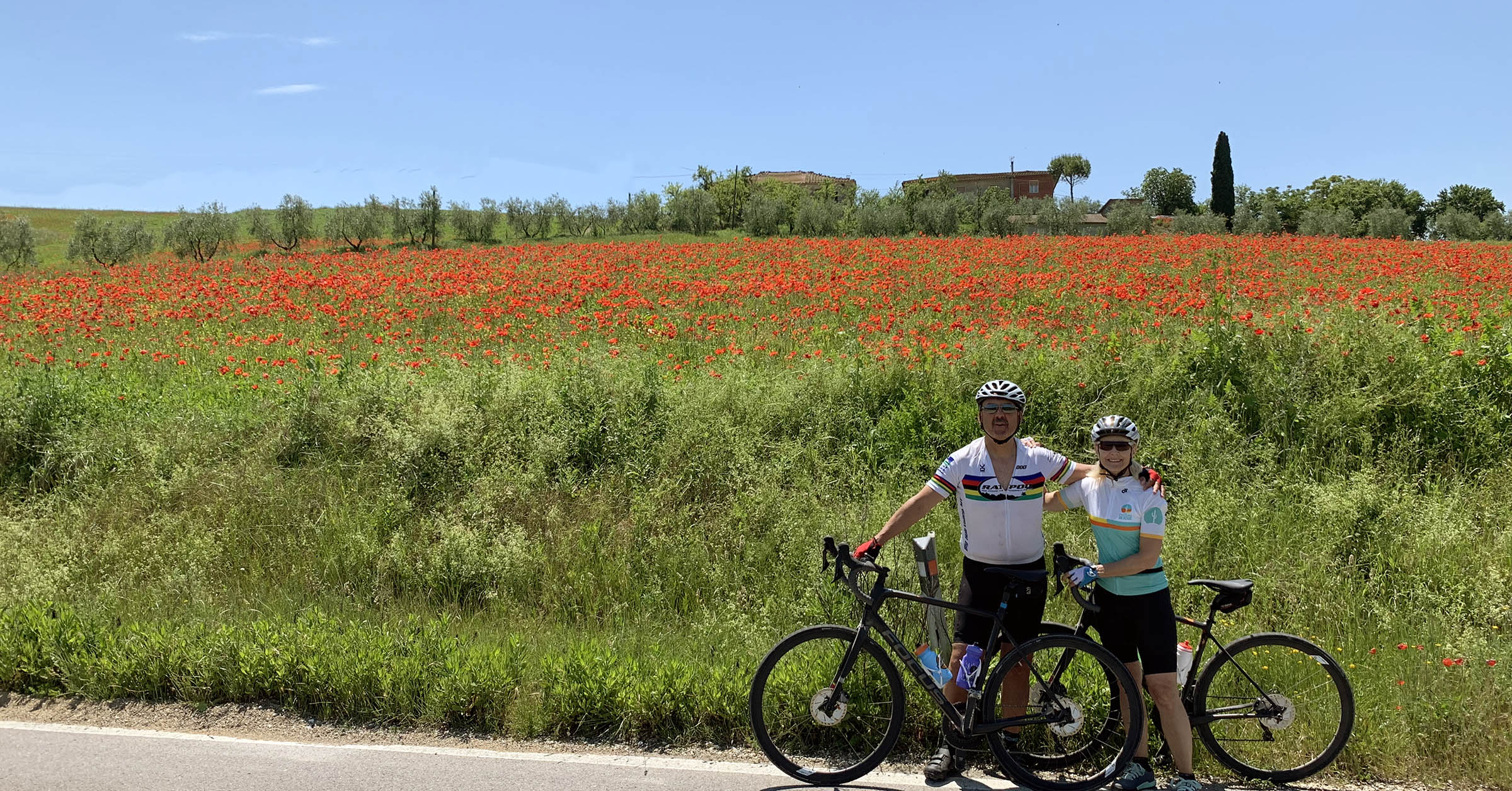Considering an international bike vacation? Read these insider tips first.
The idea of rolling through the vineyards of Tuscany or along the cliffs of Mallorca on two wheels sounds pretty dreamy, right? We couldn’t agree more. Using cycling as a means to see the world is exactly why the Cycling House offers trips to enticing destinations such as France, Italy, Spain and Chile.
If you’ve considered a cycling trip abroad but are intimidated by the thought of riding in a foreign country, take this advice from The Cycling House’s owner and president Owen Gue.
Weigh your bike options
Once you’ve decided to go on an international cycling trip, your next biggest decision is whether to fly, ship, or rent a bike. There are pros and cons to both, of course, and this helpful blog post goes into greater detail about travel logistics.
For most U.S. trips, Gue says about 50/50 whether riders bring their own bike or rent. On international trips, that number jumps to 80% rent and 20% bring their own bike.
“You can find really high-quality carbon road bikes in the areas we go to,” he says, “and it takes out that stress factor that comes with traveling with your bike.” The Cycling House has experience working with reliable local shops, making the process easy for guests. Two other benefits of renting vs. BYOB: You won’t pay crazy airlines fees, and if you plan to continue travel after your bike trip, you can do so without lugging your wheels around.
All that said, there is value in knowing you have your own bike with your own personal fit. And in recent years, it has become a lot cheaper to ship your bike with BikeFlights, who have simplified the pack and ship method. If you do ship or fly, Gue recommends bringing an extra derailleur hanger—a cheap thing to buy in the states and a difficult thing to find abroad.
Always pack bike essentials in your carry-on
Regardless of how your bike is arriving, throw your shoes, pedals, and helmet in your carry-on bag. Lost luggage overseas can take awhile to find its way to you, and it’s always easier to find a rental bike than it is to replace all your gear.
Pack nutrition if you’re picky—or just enjoy the local foodKnowing that certain products are difficult to find overseas, The Cycling House supplies electrolyte replacements and waffles or bars on every trip. Keep in mind, though, that European trips are a little bit different than U.S. camps in one (tasty) way. “We always build in café stops with pastries and coffee at least once or twice every ride,” Gue says. “It’s a It’s about experiencing the culture—the café or bakery stop is pretty critical.”
Avoid a massive cell phone bill
Before you go, download the offline version of Google maps of the area where you’re going. Guides will always be around so you won’t get lost on the rides, but sometimes it’s helpful to have context for where you are—without using data. If you want turn-by-turn instructions for your own curiosity, bring a Garmin. TCH will share route files prior to going overseas so that you can use the route function if you want. The guides do not use data, but the WiFi is prevalent enough to stay in contact for free using WhatsApp.
Strategize your jet-lag approach
You likely have your own hacks for getting rid of jet lag, but Gue recommends his fool-proof method: 1. Try to sleep during travel when you can. 2. When you land in the morning, drink coffee, regardless of what time it is back home. 3. Do not nap. 4. Jump on a bike or go for a run before the day is over. 5. Eat dinner, have a beer or glass of wine, then go to bed.
Don’t over-plan your free time
Although your day is built around riding, you do have free time in the late afternoon and evenings. “It’s funny—in Europe, you have to strike this balance between planning too much because it’s easy to say ‘let’s do this and this’—and next thing you know, it almost becomes too much,” Gue says. “Find that time to relax and enjoy the comfortable setting that we try really hard to set up.” Take a leisurely walk, read in the garden, or enjoy a European–style long meal at the end of your day. The Cycling House team generally hosts meals near the home base each night, which lends itself well to a relaxing night.
Consider the culture
You don’t have to become fluent in Italian before you go to Italy, but learning a few basic words and making the effort goes a long way with the locals. “We all struggle with this—you don’t want to screw it up so you avoid trying to speak the language,” Gue says. “I would say to push yourself out of your comfort zone. It means a lot in a different culture.” Good news about the car culture in Europe—it typically favors cyclists more than it does in America. Gue attributes it to the fact that Europeans grew up riding bikes, their parents rode bikes, etc., and they’re comfortable navigating around people on two wheels.
